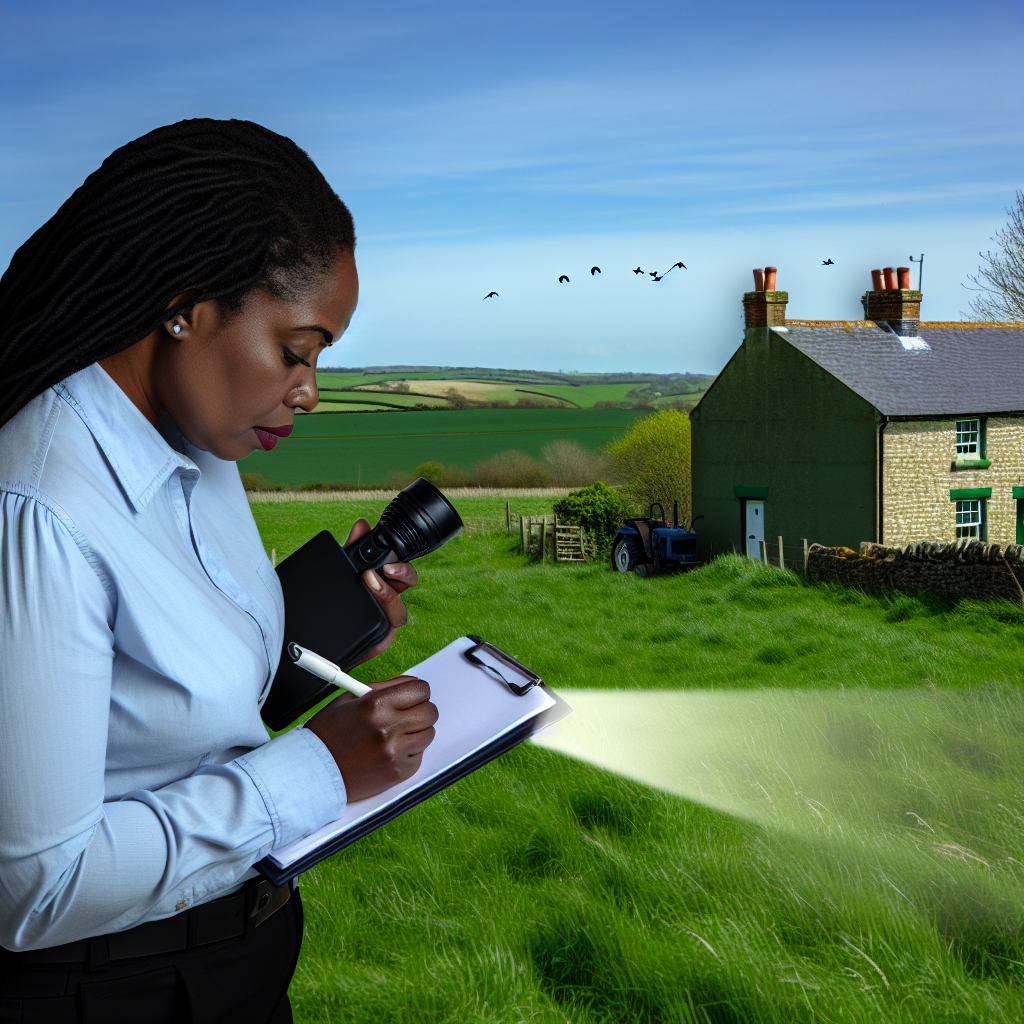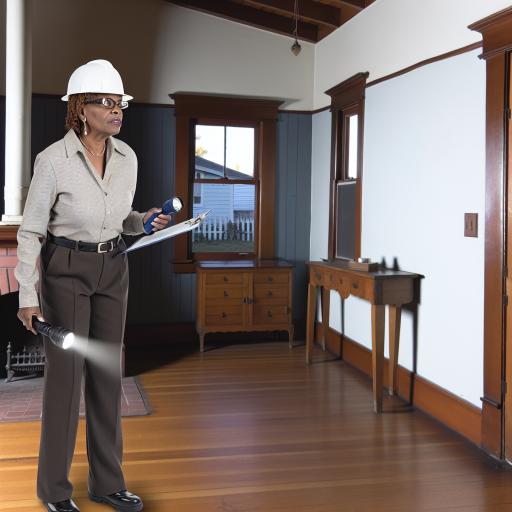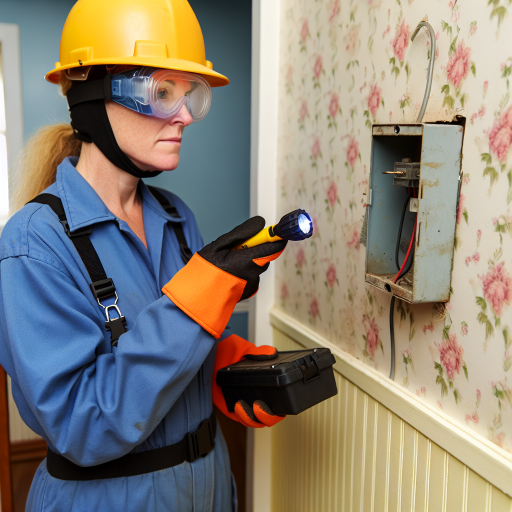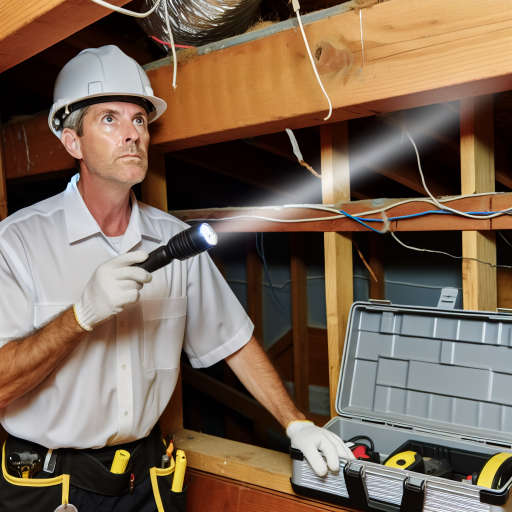Understanding the Importance of Home Inspections in Rural and Suburban Areas
Home inspections play a vital role in the buying process.
They help identify potential issues before you make a purchase.
In rural and suburban areas, these inspections become even more crucial.
Unique Challenges in Rural Properties
Rural homes may have hidden problems due to age and location.
For instance, homes in remote areas often face weather-related wear.
This makes professional inspections essential to uncover potential damage.
Wells and septic systems are common in these areas.
These systems require specialized knowledge during inspections.
Benefits of Home Inspections
Conducting a home inspection provides several benefits for buyers.
It empowers buyers with knowledge about their potential investment.
A reliable inspection can save money on costly repairs later.
Additionally, it can aid in negotiating the purchase price.
Being informed is key to making confident decisions.
Importance of Selecting Qualified Inspectors
Choosing a qualified inspector is essential for accurate assessments.
Inspectors should have experience with rural and suburban homes.
This ensures that they understand the specific challenges involved.
Look for inspectors with positive reviews and credentials.
Trustworthy inspectors will provide clear reports on their findings.
Specific Areas of Focus During Inspections
Home inspections should cover various systems and structures.
- Roofing and siding conditions may indicate future problems.
- Foundation integrity is essential for long-term stability.
- Pest infestations can be common in both rural and suburban areas.
- Electrical and plumbing systems must meet safety standards.
- Heating and cooling systems should be functioning efficiently.
Assessing these areas can help you avoid unexpected expenses.
Importance of Home Inspections
Home inspections are a crucial step in the buying process.
They allow buyers to navigate the complexities of rural and suburban properties.
Investing in a thorough inspection promotes peace of mind.
It ultimately leads to more informed homeownership decisions.
Key Differences in Home Inspection Needs Between Urban and Rural Properties
Location Considerations
The location significantly influences home inspection requirements.
Urban homes often contain smaller lots with denser construction.
Consequently, inspections may focus on neighboring structures.
In contrast, rural homes typically occupy larger, more isolated plots.
This means fewer adjacent properties affect inspection outcomes.
Utility Availability
Urban homes usually benefit from extensive utility access.
Water, electricity, and sewage systems generally connect to city services.
Inspectors must verify service lines for safety and compliance.
Rural properties may rely on private wells and septic systems.
Inspectors must evaluate these systems more thoroughly.
Environmental Factors
Urban homes may face pollution concerns, such as air and noise.
Inspectors should assess these issues when evaluating properties.
Rural homes, however, might be affected by wildlife and vegetation.
Inspectors need to consider pest infestations and plant overgrowth.
Building Codes and Regulations
Urban areas often have strict building codes and regulations.
Inspectors must ensure compliance with local ordinances.
Rural areas might feature more relaxed regulations.
This sometimes results in outdated construction practices.
Inspectors should identify potential safety hazards in these cases.
Market Dynamics
The real estate market differs significantly between urban and rural areas.
Urban properties may demand quicker inspections due to high turnover.
Conversely, rural homes might remain on the market longer.
Inspectors often have more time to assess rural properties thoroughly.
This can lead to more comprehensive inspections in those areas.
Structural Integrity: Inspecting Foundations, Roofs, and Walls
Foundation Assessment
Start by examining the foundation for visible cracks.
Look for signs of settling or shifting in the soil.
Assess drainage systems around the foundation.
Check for any moisture intrusion or mold growth.
Document any areas needing repair or further evaluation.
Roof Condition
Inspect the roof for missing or damaged shingles.
Evaluate the effectiveness of gutters and downspouts.
Look for signs of sagging or unevenness in the roofline.
Check for any leaks inside the attic or ceiling.
Make note of the roofing material and its age.
Wall Structure Examination
Inspect exterior walls for cracks or rot.
Look for signs of insect infestation, such as termites.
Check the alignment of walls from different angles.
Assess interior walls for dampness or discoloration.
Document any areas that may require structural reinforcement.
Discover More: How to Determine the True Value of a Home Before Making an Offer
Evaluating Electrical and Plumbing Systems in Rural Settings
Assessing Electrical Systems
First, check the main electrical panel for any signs of corrosion.
Examine the circuit breakers for proper labeling and functionality.
Inspect the wiring for any visible damage or wear.
Additionally, verify that all outlets and switches work correctly.
Be sure to test GFCI outlets in wet areas like kitchens and bathrooms.
Consider hiring a licensed electrician for a thorough evaluation.
Understanding Plumbing Systems
Begin by inspecting the main water supply line for leaks.
Check the age and condition of the pipes, especially if they are galvanized.
Inspect all fixtures for proper operation and any signs of leaks.
Additionally, look at the water heater for age and maintenance history.
Ensure that drains function properly without slowdowns.
Don’t forget to test the water pressure; it should be within a normal range.
Identifying Potential Issues
Look for any signs of water damage around sinks and bathtubs.
Pay attention to unusual water stains on ceilings and walls.
Check for any pest infestations that could affect plumbing.
Examine the overall layout to identify any possible upgrades.
Obtaining Expert Insights
Consider consulting with local professionals for additional advice.
Instead of relying solely on visual inspections, opt for specialized testing.
Local inspectors can provide insights specific to rural construction standards.
Research local building codes to ensure compliance with regulations.
Find Out More: How To Determine Your Budget As A First-Time Homebuyer In The USA
Assessing Heating and Cooling Systems: Variations Between Urban and Rural Homes
Understanding System Differences
Heating and cooling systems can differ greatly between urban and rural settings.
Urban homes often rely on centralized systems.
These systems sometimes connect to municipal supplies.
Rural homes may depend on alternative heating methods, like propane or wood.
This reliance can affect efficiency and costs significantly.
Evaluating Energy Sources
Energy sources directly impact system performance.
In urban areas, electricity and natural gas are the primary sources.
Rural areas might not have immediate access to natural gas.
As a result, propane or electricity becomes crucial in these homes.
Consider the availability and price of these sources when assessing a home.
Inspecting System Types
Different heating systems exist to cater to unique needs.
Urban homes may feature forced-air systems, delivering warmth efficiently.
In contrast, rural homes often use radiant floor heating or wood stoves.
Each system requires specific inspection considerations.
Considering Climate Effects
Climate can significantly influence system performance.
Cold winters in rural areas demand robust heating solutions.
Urban homes might not require the same level of insulation.
Understanding local climate trends is essential during inspections.
Maintenance and Longevity
Regular maintenance ensures heating and cooling systems operate efficiently.
Urban homeowners often have access to professional services nearby.
Rural residents might face challenges finding qualified technicians.
Establishing a maintenance schedule is vital regardless of location.
Future Considerations
As technology evolves, so do heating and cooling options.
Homeowners should stay informed about energy-efficient technologies.
Smart systems are gaining popularity in both urban and rural homes.
Transitioning to more efficient systems can result in long-term savings.
Find Out More: Best Practices For Environmental Safety In A Detailed Home Inspection Checklist
Identifying Environmental Concerns
Well Water Testing
Well water testing is crucial for rural homes.
Contaminated water can lead to serious health issues.
Regular testing ensures water quality and safety.
Test for bacteria, nitrates, and heavy metals.
Consider hiring a certified professional for accurate results.
Use a reputable laboratory for water analysis.
Remember to test after heavy rains or flooding.
Also, consider seasonal changes that may affect water quality.
Septic Systems
A septic system is essential for homes without city sewage.
Regular maintenance can prevent costly repairs.
Inspect the septic tank every three to five years.
Look for signs of failure, such as odors or backed-up drains.
Ensure the drainage field is clear of debris and roots.
Educate homeowners about proper septic system use.
Avoid flushing non-biodegradable items.
Proper care extends the life of the septic system.
Environmental Regulations
Understand local laws regarding well water and septic systems.
Consult state or local health departments for guidance.
Stay informed about changes in environmental regulations.
Homeowners may need permits for installations or repairs.
Engage with local environmental groups for resources.
Learn More: How to Negotiate with Sellers for the Best Deal on a Home

Exterior Inspection: Evaluating Siding, Decks, and Garages
Assessing the Siding
Begin by inspecting the siding for visible damage.
Look for cracked or warped panels that may need replacement.
Check for signs of rot or insect infestation, especially in wood siding.
Make sure the paint or stain is intact to protect against moisture.
Evaluate the condition of caulking around windows and doors.
In addition, ensure proper installation to prevent moisture intrusion.
Examining the Decks
Next, focus on the decks surrounding the home.
Look for loose boards that can pose a tripping hazard.
Inspect the railing for stability and structural soundness.
Examine the posts to ensure they are not rotting at the base.
Check the connection points where the deck meets the house.
Make sure that the deck’s surface allows for effective drainage.
Evaluating the Garage
Now turn your attention to the garage structure.
Inspect the garage door for proper functionality and balance.
Check the seals around the door for any gaps or wear.
Assess the overall condition of the walls and ceiling inside.
Look for signs of moisture intrusion or mold growth as well.
Additionally, ensure that electrical outlets are properly positioned and functional.
General Considerations
Throughout your inspection, pay attention to overall cleanliness.
Clear debris from gutters and downspouts to avoid water buildup.
Consider the landscaping around the home that may affect drainage.
Be aware of any nearby trees that can damage the exterior over time.
Ultimately, keep a detailed record of all findings for future reference.
Essential Safety Checks
Carbon Monoxide Testing
Carbon monoxide is a deadly, colorless gas.
It can build up in poorly ventilated areas.
Therefore, testing is crucial for safety.
Install carbon monoxide detectors throughout your home.
Ensure they are placed near sleeping areas.
Check these detectors monthly for functionality.
Replace batteries at least once a year.
Moreover, consider professional inspections every few years.
They can identify potential leaks from fuel-burning appliances.
Taking these steps significantly reduces health risks.
Radon Testing
Radon is an odorless radioactive gas.
It can enter homes through cracks in foundations.
Testing for radon is essential, especially in certain areas.
Use a radon testing kit or hire a professional.
In addition, perform testing during different seasons.
This approach ensures accurate results throughout the year.
If radon levels exceed 4 pCi/L, mitigation is necessary.
Install a radon mitigation system to lower exposure risk.
Regular re-testing will help maintain safe levels over time.
Additional Safety Measures
In addition to carbon monoxide and radon checks, other safety measures exist.
Inspect fuel-burning appliances for leaks regularly.
Maintain ventilation systems to promote air circulation.
Moreover, keep areas around heating appliances clear of debris.
Conduct thorough inspections of your home’s foundation.
Look for any openings or cracks that may allow gas entry.
Ensure all safety devices are functioning properly and are up to date.
Documentation: Recording Findings and Understanding Inspection Reports
Importance of Proper Documentation
Proper documentation is crucial during a home inspection.
It helps buyers make informed decisions.
Additionally, it provides a reference for future repairs.
Poor documentation can lead to misunderstandings later.
Types of Inspection Reports
There are various types of inspection reports available.
Common formats include written, photographic, and digital reports.
A detailed written report summarizes key findings.
Photographs can illustrate issues and areas of concern.
Digital reports may offer interactive elements for easier navigation.
Key Elements of an Inspection Report
An inspection report typically includes several key sections.
First, it should have an overview of the property inspected.
Next, it details observations about various systems and components.
Common systems include plumbing, electrical, and HVAC.
Furthermore, the report highlights areas needing attention.
How to Record Findings
Recording findings efficiently is essential.
Use clear, concise language to describe each issue.
Make sure to categorize problems based on severity.
Additionally, consider using checklists for consistency.
Checklists can simplify the comparison of multiple properties.
Understanding Inspection Reports
Understanding the report format will benefit home buyers.
Learn how to read throughout sections properly.
Identify symbols or shorthand used by the inspector.
Ask the inspector for clarification on ambiguous notes.
Regularly reviewing reports can improve your knowledge over time.
Follow-Up Actions
After reviewing the report, determine necessary follow-up actions.
Prioritize repairs based on urgency and importance.
Contact professionals for estimates on repair costs.
Additionally, consider negotiating with sellers based on findings.
Document all communications regarding repairs for future reference.
Additional Resources
The Architectural Guide for American Home Styles : r/coolguides
8 Important Home Buying Tips & Steps to Home Buying | FastExpert




